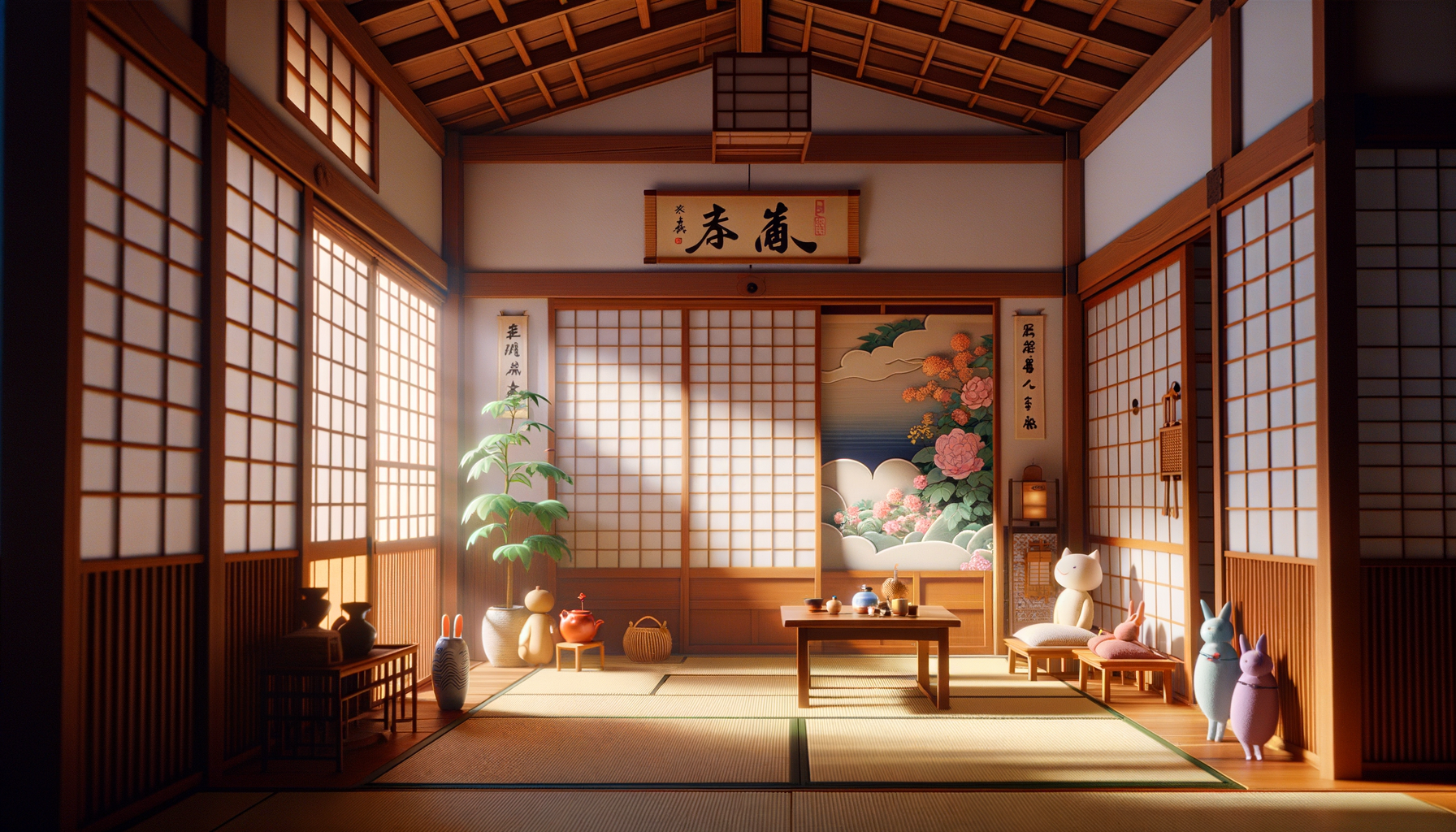The Timeless Elegance of Japanese Shoji Screens
Japan is renowned for its rich cultural heritage and traditional craftsmanship, with one of its most iconic elements being the shoji screen. These translucent panels, constructed from wooden frames and delicate washi paper, have graced Japanese homes and buildings for centuries, captivating visitors with their understated beauty and functional versatility. The artistry and practicality of shoji screens embody the essence of Japanese design principles that harmonize simplicity, nature, and light.
The Art of Diffusing Light
One of the most striking features of shoji screens is their ability to diffuse light, creating a soft, ambient glow that permeates the room. Unlike harsh, direct lighting, the translucent nature of the washi paper filters and dissipates sunlight, eliminating stark contrasts and providing a homogenous lighting effect that feels inviting and serene. This gentle illumination not only enhances the overall ambiance but also offers a soothing experience for the eyes, allowing individuals to unwind and relax.
This distinctive quality of shoji screens reflects the Japanese appreciation for harmony and balance, where every element is carefully considered to create a sense of tranquility. In traditional Japanese aesthetics, light plays a crucial role, and shoji screens are designed to embrace this principle, transforming spaces into sanctuaries of calm. Rooms adorned with shoji screens are often seen as oases, inviting natural light while maintaining a sense of privacy and intimacy.
Geometric Patterns: A Feast for the Eyes
Beyond their lighting capabilities, shoji screens are also celebrated for their intricate geometric patterns. The harmonious combination of wooden frames and delicate paper creates a visually stunning interplay of lines and shapes, transforming these screens into works of art that capture the eye. Each pattern tells a story, often inspired by nature, geometry, or traditional motifs.
- Intricate Designs: The patterns can range from simple grids to elaborate, interwoven designs, each one meticulously crafted to reflect the artisan’s skill and attention to detail. The artistry involved in creating these patterns often requires years of training and practice, showcasing the dedication of Japanese craftsmen who uphold these traditions.
- Focal Point: These designs not only add aesthetic appeal but also serve as focal points within a room, drawing the eye and inviting contemplation. The visual balance achieved through these patterns enhances the overall design of a space, encouraging interaction and engagement among inhabitants and guests alike.
- Customization: With the ability to customize the patterns, shoji screens offer homeowners the opportunity to infuse their living spaces with their personal style and taste. This flexibility allows individuals to select patterns that resonate with their own vision, thus creating a unique atmosphere that reflects their identity and lifestyle.
Steeped in History and Cultural Significance
Shoji screens are deeply rooted in Japanese culture and history, dating back to the Heian period (794–1185). Initially used as interior fittings for homes and buildings, their versatility quickly expanded to encompass various ceremonial and artistic purposes. Understanding their historical significance adds depth to our appreciation of these beautiful structures.
- Tea Ceremonies: During traditional tea ceremonies, shoji screens provided a serene backdrop, allowing participants to focus on the ritual and appreciate the subtle beauty of their surroundings. The screens often framed views of nature, connecting participants with the outside world while maintaining an atmosphere of tranquility.
- Artistic Backdrops: These screens were often used as backdrops for concerts, dances, and other artistic performances, adding an elegant touch to the proceedings. Their light-diffusing properties contributed to a dreamlike ambiance, enhancing the overall experience for both performers and audiences.
- Buddhist Rites: In Buddhist temples, shoji screens served as enclosures during rituals, creating a sense of reverence and privacy. The inclusion of screens in such sacred spaces highlights their role in fostering mindfulness and contemplation, essential components of spiritual practice in Japan.
The artwork on these screens often starts from the bottom, reflecting the customary practice of sitting on the floor in Japanese culture, further reinforcing their deep-rooted connection to tradition. This thoughtful design approach signifies the Japanese philosophy that emphasizes humility and respect for the environment.
Portability and Flexibility: A Versatile Solution
One of the key advantages of shoji screens is their portability and flexibility. These lightweight panels can be easily moved and reconfigured to suit various needs, making them an adaptable solution for modern living. This practicality resonates with today’s evolving lifestyle, where spaces often need to serve multiple purposes.
- Room Dividers: Shoji screens can be used as temporary or permanent room dividers, allowing homeowners to create separate living spaces or add privacy as needed. In urban environments where space is at a premium, these screens offer a creative solution to redefine areas without permanent alterations.
- Partitions: In open-plan layouts, shoji screens can be employed as partitions, defining different areas while maintaining a sense of openness and flow. This allows for a seamless transition between spaces, creating distinct zones for relaxation, work, or socializing.
- Doors and Windows: Surprisingly, these screens can even serve as doors and windows, providing a unique and visually appealing alternative to traditional options. When used in this way, shoji screens enhance the aesthetic while allowing for light movement and air circulation, embodying the Japanese principle of living in harmony with nature.
This adaptability makes shoji screens a practical choice for both traditional and contemporary interior designs, allowing homeowners to seamlessly blend functionality and aesthetics. The ability to easily rearrange and customize these screens ensures that they remain relevant in an ever-changing world.
Durability and Maintenance: A Lasting Investment
While their delicate appearance may suggest fragility, traditional shoji screens were crafted from high-quality softwoods like Hinoki cypress, known for their strength and durability. Modern iterations can also be made from other woods like Alaskan yellow cedar, which offers a tight grain structure and ease of maintenance. This combination of materials ensures that shoji screens are both beautiful and robust.
- Longevity: With proper care and maintenance, shoji screens can last for decades, making them a wise investment for homeowners seeking long-lasting beauty. The durability of these screens minimizes the need for frequent replacements, promoting sustainability in home design.
- Easy Maintenance: The washi paper can be replaced periodically, allowing homeowners to refresh the look of their screens without the need for complete replacement. This aspect of maintenance not only supports longevity but also enables individuals to adapt their screens to changing styles or seasons, adding versatility to their interior design.
- Sustainability: Many traditional shoji screens were crafted from sustainable materials, aligning with modern eco-friendly practices and contributing to a greener living environment. The use of natural resources and the emphasis on craftsmanship reflect a deep respect for the environment, which resonates with current sustainability efforts.
Embracing Tradition and Modernity
Despite their ancient origins, shoji screens have seamlessly transitioned into contemporary interior design, offering a unique blend of tradition and modernity. Their timeless appeal and adaptability make them a sought-after choice for homeowners seeking to infuse their living spaces with a touch of Japanese elegance.
Whether used as room dividers, partitions, or even doors and windows, shoji screens bring a sense of tranquility and beauty to any space they grace. Their ability to diffuse light, create intricate geometric patterns, and connect with Japan’s rich cultural heritage make them a true embodiment of the country’s commitment to craftsmanship and aesthetic refinement.
As the world continues to embrace minimalism and seek harmony in design, the enduring appeal of shoji screens serves as a reminder of the timeless beauty that can be found in simplicity and functionality. Embrace the elegance of these Japanese treasures and let their soft, diffused light illuminate your living spaces with a touch of ancient grace.
Sources
- Tansu: Japanese Shoji Screens History
- Instructables: Make a Pair of Shoji Japanese Sliding Screens
- Brian Holcombe Woodworker: Making Shoji
- Arts and Culture: The Mark of Beauty: Shoji Screens
- Wasou Design: Shoji Screen
.
This article is generated by SafeComs AI, Automation Bot.





Leave a Reply